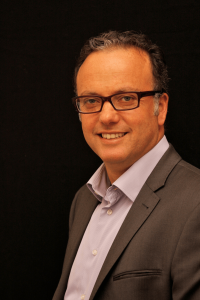Much of what professional firms do in the name of strategic planning is a complete waste of time, no more effective than individuals making New Year’s resolutions (to lose weight or give up smoking).
David argued that most firms were far too successful to seriously consider any radical shifts in strategy. He stated that unless partners faced imminent existentialist threats, equivalent to cancer or a heart attack, they were just going to pay lip-service to a strategy that involved any sort of change.
Much of what I’ve read and experienced as a strategy advisor affirms David’s proposition. But is 2017 going to be the year the fat smoker quits?
Early signs
Over the past six months I have been involved in a significant strategy project in a 100+ partner law firm. One thing that has struck me about this project compared to many others, is the degree of partner engagement in the process. They’ve all turned up. What’s more they all turned up with their their phones turned off. They’ve all seriously tackled the questions of where they will play, how they will win and what change is needed. It’s still a bit early to see if they will execute on their plans, but the early signs are positive.
In undertaking the research for the 2016 Thomson Reuters Peer Monitor Melbourne Law School report, I counted more than 25 case studies of established Australian BigLaw firms launching new services, business models or joint venturing. Each one of these changes would have had to pass through a vote of partners. This points to a resolve to innovate AND, more importantly, the ability to follow-through.
The typical resistors to change are very well document, but I think there are three factors that might make 2017 the year of slimmer, healthier professionals.
#1 Transformed leaders
“Company transformations accelerate when a critical mass of leaders transform themselves… Insight is the first step. Choice is the second step. Practice is the third step.” Carolyn Aiken
It’s a big call, but I think many of Australia’s professional service leaders have begun to transform themselves. They are going through the personal change journey of rejection and denial, through to acceptance and commitment. Many have seen the writing on the wall, challenged their beliefs and sought to reinvented themselves. This has in turn has led them down the path of changing the people around them and crafting a new strategy and culture for their firms. With a stronger guiding leadership coalition, firms themselves are in a much better position to embrace change.
The evidence for my transformed leader assertion is not definitive. It’s based largely on the tone and content of discussions at recent conferences, retreats, panels, media comments and blogs. Dialogue at this fabulous Chris Merritt-hosted panel is a clear case in point.
#2 Hip pocket
The 2016 Peer Monitor report indicates lower overall profit per equity partner due, in part, to declining client demand, increased discounting and rising expenses. The data also suggests a wider variation between top- and bottom-earning firms.
For many partners, there is increased pressure to justify their equity status and share of profits. Even a small drop in earnings or a delay in distribution payments, signals the reversal of a long-term trend of growth and abundance. The misfortunes of KWM in Europe have also raised more than a few eyebrows. The hip pocket is now in play, even though at this stage it’s more symbolic than catastrophic.
#3 Client pressure
Leadership guru, Simon Sinek, has a very simple but compelling message: start with why! His view is that success comes from finding an authentic purpose for the firm. The answer to the “why” question in most professional firms is about helping clients succeed, that is, saving clients money, reducing their risk, solving their problems and realising their opportunities sooner. The voice of the client is a big deal in many professional firms. How clients think and feel is a key catalyst for change.
With a shift to a buyers market, more and more clients are speaking their mind and voicing their pains and gains. Many more are asking for their professional advisors to share risk and justify their fees. While this client pressure is not a new phenomenon, 2017 will seek a continuation of this trend and force many professionals to adapt to new models of service and pricing.
In conclusion
The pace of change is only likely to increase in the years ahead. While many commentators paint a picture of doom and gloom, I have a more optimistic view and see clear signs of firms remaking themselves. There are forces at play softening the ground for fundamental and sustainable change. Yes, there will still be laggards, but as Maister concludes…
If we are prepared to rethink how we view strategy and business life, then people can achieve things they never thought possible. If I can become a fit, nonsmoking exerciser, there’s truly no limit!



Leave a Reply